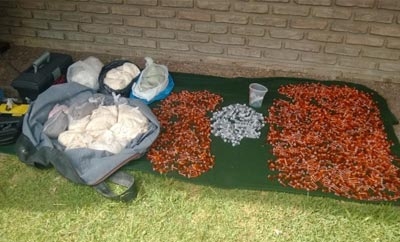Seizures of ecstasy tablets in Buenos Aires increased 2,900 percent between 2011 and 2013, in what could be a sign that the country’s growing domestic market for synthetic drugs is leading to a migration of production from Europe to Argentina.
In 2011, Buenos Aires police seized approximately 1,700 ecstasy tablets, reported La Nacion. In 2012 this rose to over 11,000 and last year reached approximately 50,000 tablets.
Seizure rates were boosted by the discovery of a synthetic drugs production and distribution ring operating in the city in September last year. In one of the sites raided police seized over 20,000 tablets.
Recent arrests also highlight how production is not just focused in the capital city. In January, police in the coastal town of Mar de Ajo in Buenos Aires Province raided a laboratory, seizing 700 ecstasy tablets and enough precursor chemicals to make an estimated 600,000 more.
InSight Crime Analysis
While the ecstasy market in Argentina remains fairly small, there are indications that it has grown substantially in the last decade. One 2011 government study (pdf) recorded lifetime use rates rising from 0.3 percent of the population in 2004 to 0.7 in 2010, with much higher rates for young users.
The market is also attractive as ecstasy tablets fetch a much higher price than other drugs that are produced in the region, such as cocaine and marijuana.
SEE ALSO: Coverage of Argentina
Most ecstasy was originally imported from Europe, especially the Netherlands, which has been one of the traditional production centers (pdf). According to La Nacion, the trade was often handled by European criminals, and was linked to the opening up of cocaine routes transiting through Argentina, as the two commodities could be exchanged.
The rapid growth in seizures of ecstasy in Argentina could be indicative of a use rate that is growing quicker than official estimates suggest, but also of a criminal migration in production.
By manufacturing ecstasy within the country — where precursor chemicals are notoriously easy to source — local criminals can vastly increase their profit margins by cutting out the high costs of paying importers and taking control of the entire chain of production and distribution for themselves.

